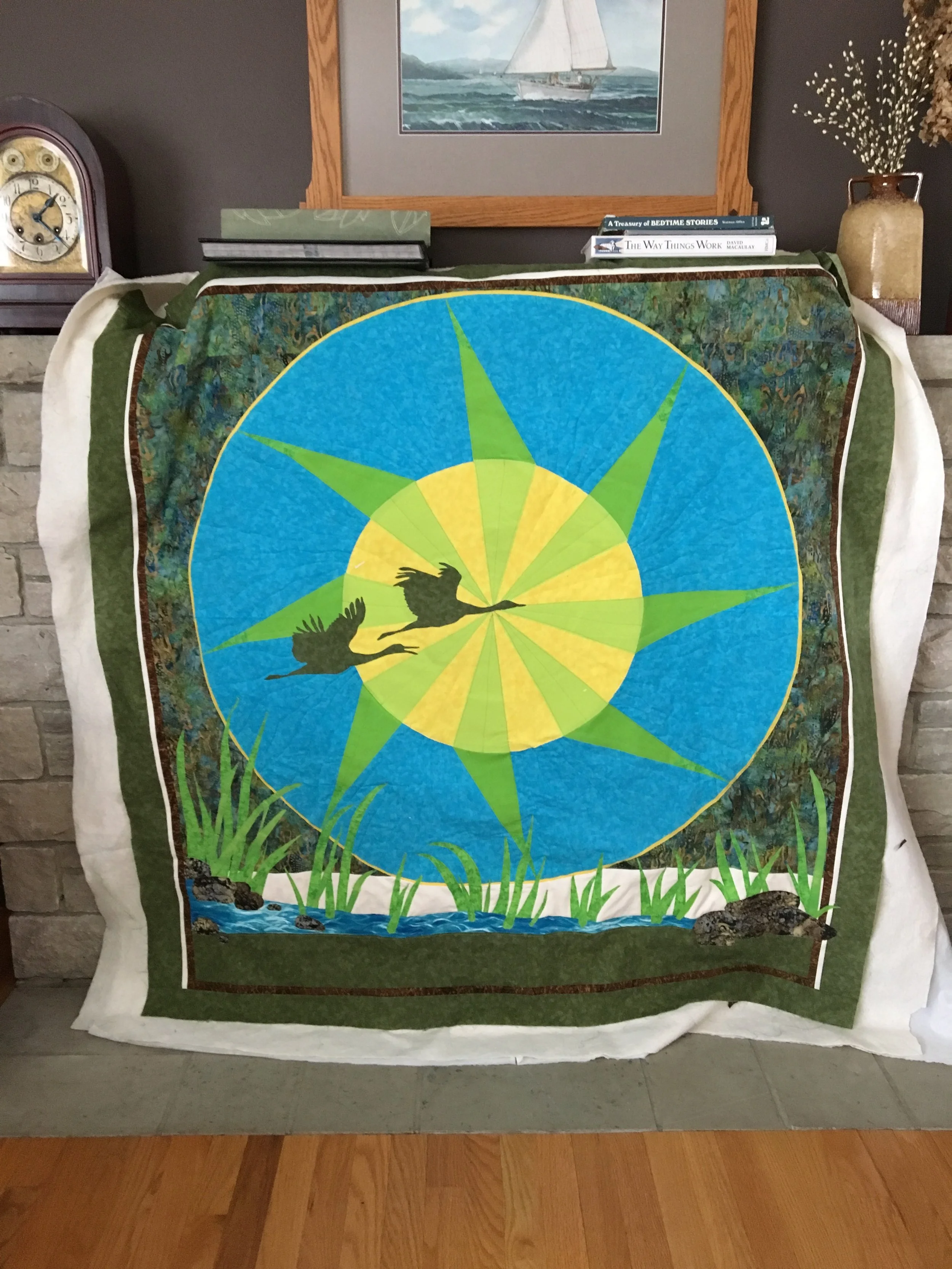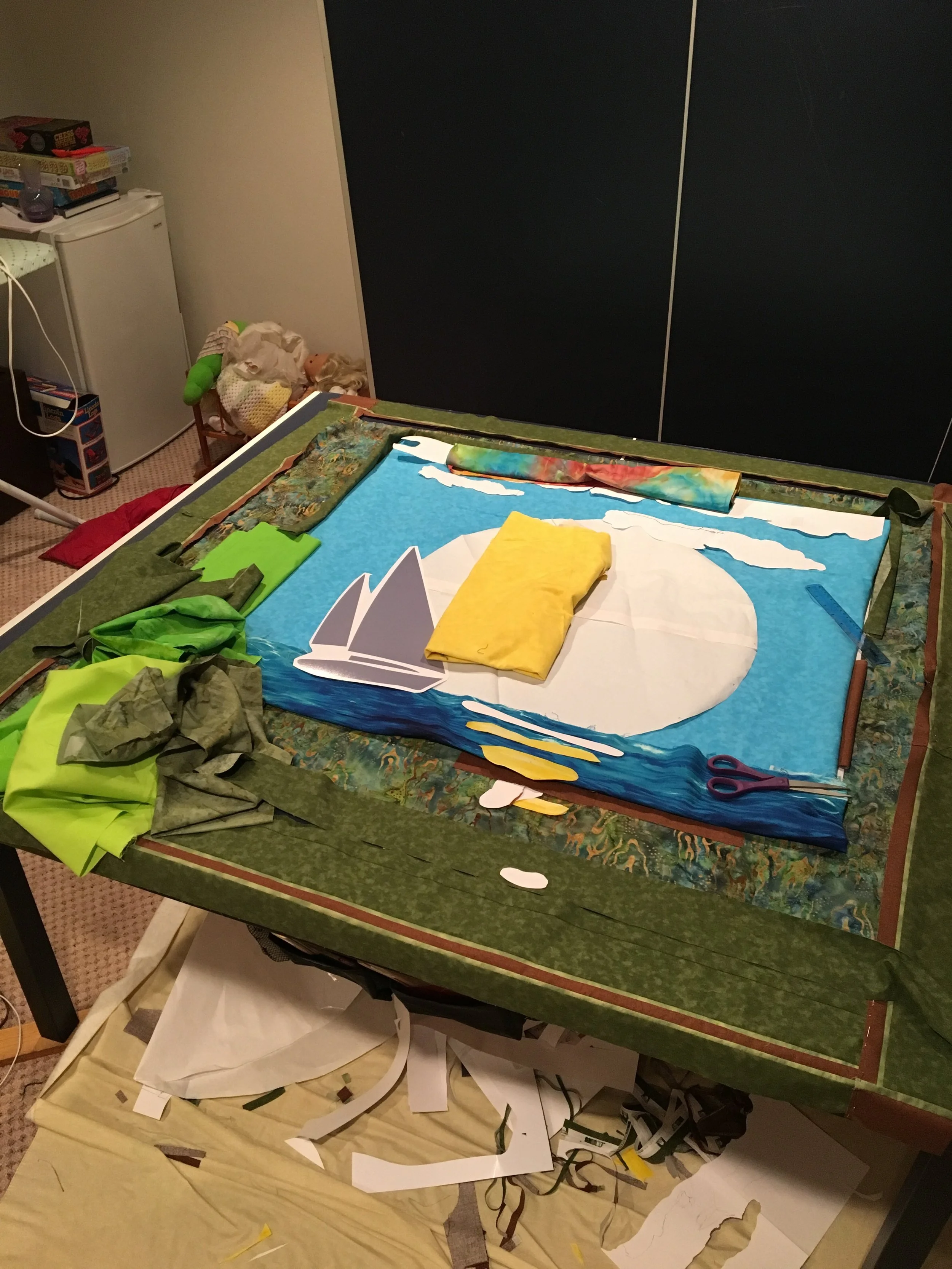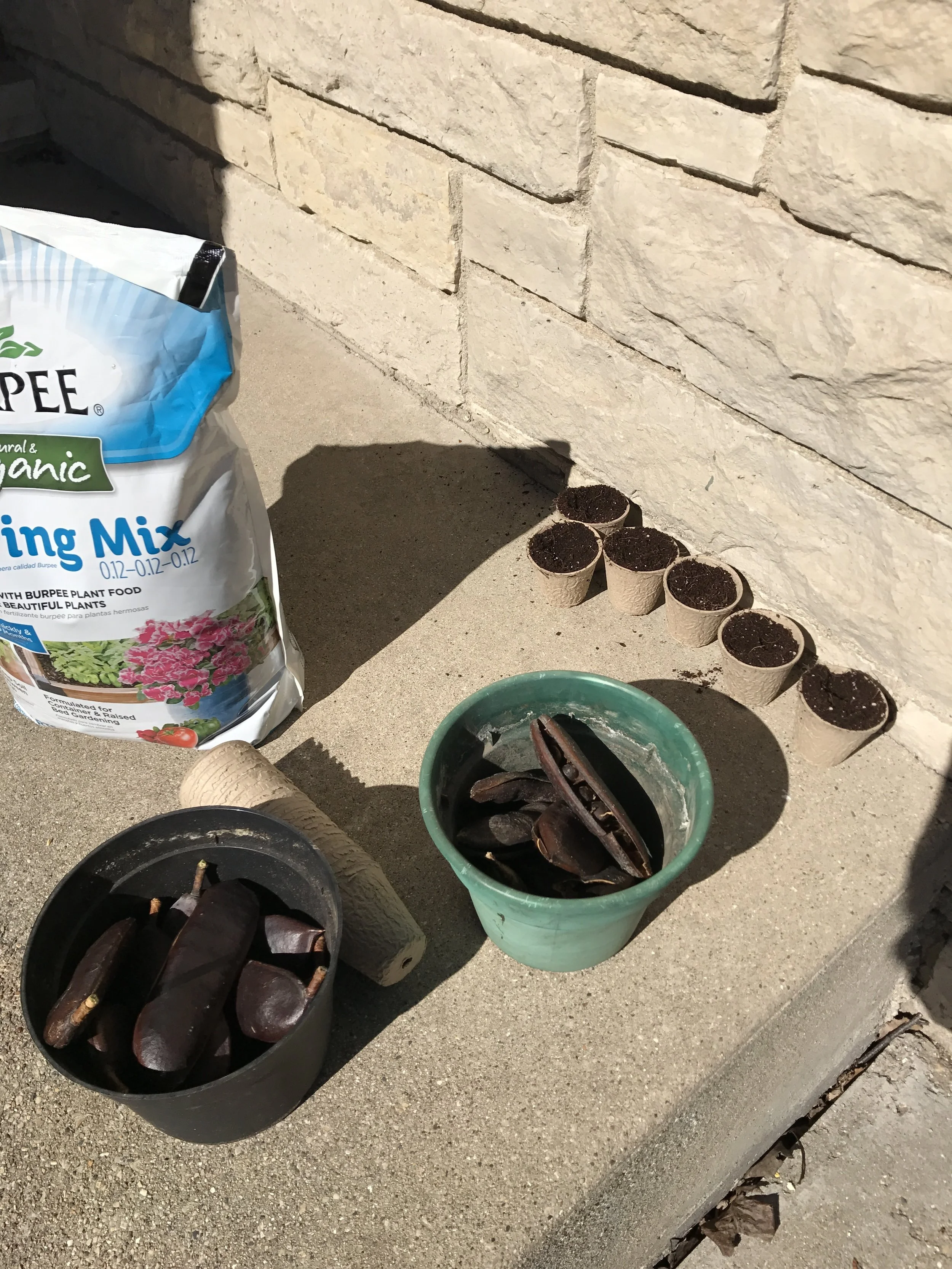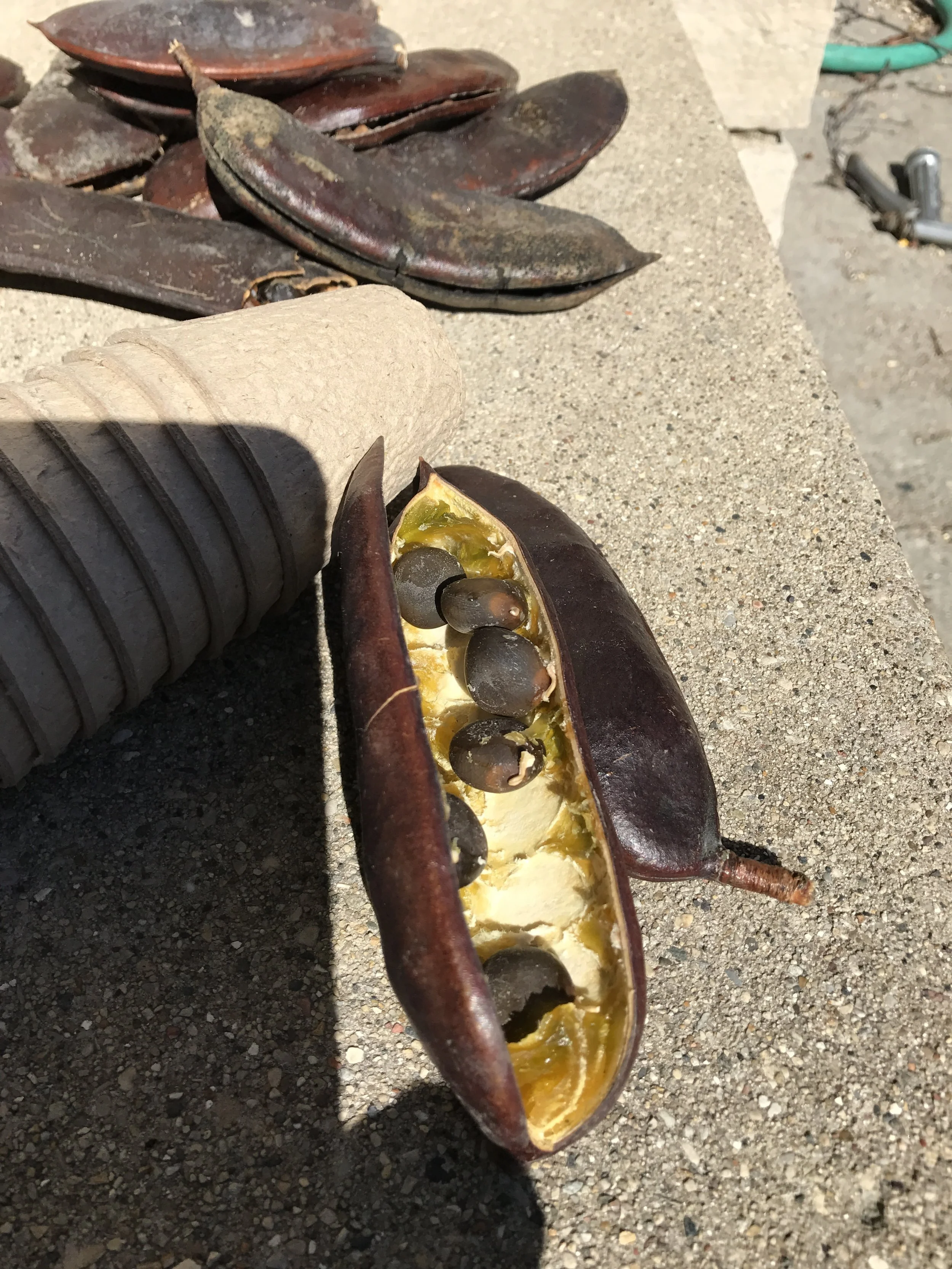Quilt Works and Tree Farm
Just trying to keep from blowing away. Gusts to 60 mph, almost enough to sweep a two-footed walker off his feet. Four-foot, however, just thought it was a blast and was cranked.
Lots of tree pruning going on—and something unimaginable happening out on the big lakes.
Closer to home, the big, two-sided tapestry that will hang between posts on the upper level of Kagawong house as an acoustic aid, is coming together...
...and looking good. What a vast amount of work, except, supposedly, it's fun.
Meanwhile, I've started a Kentucky Coffee Tree tree farm. (It is one of my favorite trees.) Thanks to the wind quite a few pods were dislodged today from the mother tree over in Starin Park.
The pods are tough, woody, and filled with a gooey jelly, which is somewhat toxic. The multituidinous, ravenous squirrels hereabouts clearly leave them alone.
I think the Kentucky Coffee Tree, with its rough bark, twisted branching habit, and alternate, binately compound leaves is unusually handsome.
~~~~~~~~~
From Wikipedia:
The Kentucky coffeetree is believed to be an example of evolutionary anachronism. The tough, leathery seed pods are too difficult for many animals to chew through (in addition to being poisonous) and they are too heavy for either wind or water dispersal. It is thus believed that the tree would have been browsed upon by now-extinct mammoths and mastodons which ate the pods and nicked the seeds with their large teeth, aiding in germination. This behavior is seen among African elephants eating Fabaceae relatives in Africa. Because of this, its prehistoric range may have been much larger than it has been in historical times. Today, in the wild, it only grows well in wetlands, and it is thought that only in such wet conditions can the seed pods rot away to allow germination in the absence of large herbivores.
Let me know if you would like a tree or two.




